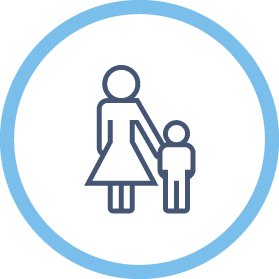Self-Employed Individuals
Self-Employed Individuals Open Enrollment Information:
Self-Employed individuals may opt into PFL if they carry on a trade or business as a:
- Sole proprietor,
- Independent contractor, or
- A member of a partnership
To opt in, an individual can be self-employed anywhere. However, to be eligible for benefits the individual must earn self-employment income for work performed more than 50% of the time in DC during some or all of the 52 calendar weeks before his or her qualifying event. In other words, self-employed individuals must work at least half of the time in DC for some part of the year before they need paid leave.
Some businesses owners with employees may be considered both Covered Employers and Self-Employed.
An individual can enter the PFL program as both a self-employed individual and a covered worker. A person may work for a covered employer but also have a business. Alternatively, a person may work as a freelancer but work part-time for a covered employer. Regardless, individuals have the option of opting in and including their self-employment income in their benefit calculations.
A wide range of individuals may be considered self-employed including: Ride-sharing drivers, bloggers, photographers, food-delivery workers, consultants, caregivers, artists, graphic designers, etc.
There are two (2) times self-employed individuals can opt into PFL:
- Every November and December, or
- Within 60 days of the commencement of their self-employment in DC.
Self-employed individuals that don’t opt in when they are first eligible must remain in the program for three (3) years if they opt in later and won’t be eligible for benefits for the first year after opting in..
Opt In
To opt in, individuals must provide documents to prove their self-employment.
This can be done by providing a copy of their DC business license or occupational license.
An individual can also submit:
- Contracts,
- Tax documents,
- Billings from or payments to a DC address (including electronic billings),
- Documents demonstrating that work was performed at a specific site in DC, or
- Similar documentation that demonstrates self-employment in DC.
Online Portal
Like all other covered employers, self-employed individuals will need to register and use the online portal. The online portal will be used to:
- Report self-employment income,
- Pay quarterly contributions,
- Receive notifications from DOES, and
- File a PFL claim.
Click here to access the online Employer Self Service Portal
How Much Do Self-Employed Individuals Pay for the PFL Program?
Self-employed individuals will pay a tax on their total gross earnings from all of their self-employed businesses that they perform work for at least 50% of the time in DC.
What is Opting Out?
Self-employed individuals may choose to leave the program and not pay further contributions by opting out. They can do this by opting out of the program during general open enrollment periods during November and December of each year. However, self-employed individuals who did not opt in when they were first eligible for the program cannot opt out for three (3) years after joining.
For more detailed information, download our Employer Toolkit on our Resources page.
Potential Impact of Paid Family Leave

Keep Women Working
Paid Family Leave benefits all workers, but is especially critical for women. Women staying in the workforce increases the economic stability of families and contributes to overall economic growth and productivity.

Prevent Lost Wages
Without Paid Family Leave, women are discouraged from staying in the workforce so they can care for family members. As a result, they can lose an estimated $274,044 in lifetime wages, according to a study by the MetLife Mature Market Institute.

Support Working Mothers
New mothers who take Paid Family Leave around the birth of a child are more likely to stay in the workforce than those who do not.
